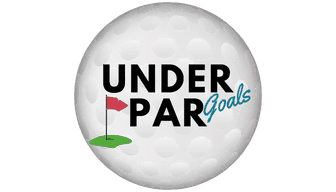When you’re getting started in this sport, looking at a bag of 14 clubs can be overwhelming when you’re out on the course. But it doesn’t have to be.
You use each golf club on the course based on the distance to your target, how far you typically hit each specific club, and other course conditions that can affect your shot like the lie, weather, or speed of the greens.
Of course, that is easier said than done, so let’s break it down a little more to help you make some better decisions on the course.
What Golf Club Should I Use For Each Distance?
Everyone’s club distances are going to be different. They will depend on your skill level and swing speed.
That being said, I can share some data I found from GolfLink to give you a rough idea of what to expect.
| Club | Slow Swing Speed | Average | High Swing Speed |
|---|---|---|---|
| Driver | 200 yds | 230 yds | 260 yds |
| 3 Wood | 180 yds | 215 yds | 230 yds |
| 5 Wood | 170 yds | 195 yds | 210 yds |
| 3 Hybrid | 163 yds | 190 yds | 205 yds |
| 3 Iron | 160 yds | 180 yds | 200 yds |
| 4 Iron | 150 yds | 170 yds | 180 yds |
| 5 Iron | 140 yds | 160 yds | 170 yds |
| 6 Iron | 130 yds | 150 yds | 160 yds |
| 7 Iron | 120 yds | 140 yds | 150 yds |
| 8 Iron | 110 yds | 130 yds | 140 yds |
| 9 Iron | 95 yds | 115 yds | 130 yds |
| Pitching Wedge | 80 yds | 105 yds | 120 yds |
| Sand Wedge | 60 yds | 80 yds | 100 yds |
| Lob Wedge | 50 yds | 70 yds | 90 yds |
Keep a few things in mind when looking at these numbers.
First, don’t even worry about maxing out your wedge distances. Hitting a wedge 150 yards is cool for fun, but it’s way more important to hit consistent yardages with these shorter clubs.
Also, notice the tiny difference between the 3 iron and 3 hybrid. Of course there are differences between irons and hybrids, but in general, most amateurs should opt for the hybrid in place of the long iron as it is far easier to hit high and stop on the green.
Finally, this cart really doesn’t help you know what club to use because, chances are, you aren’t exactly at these average numbers.
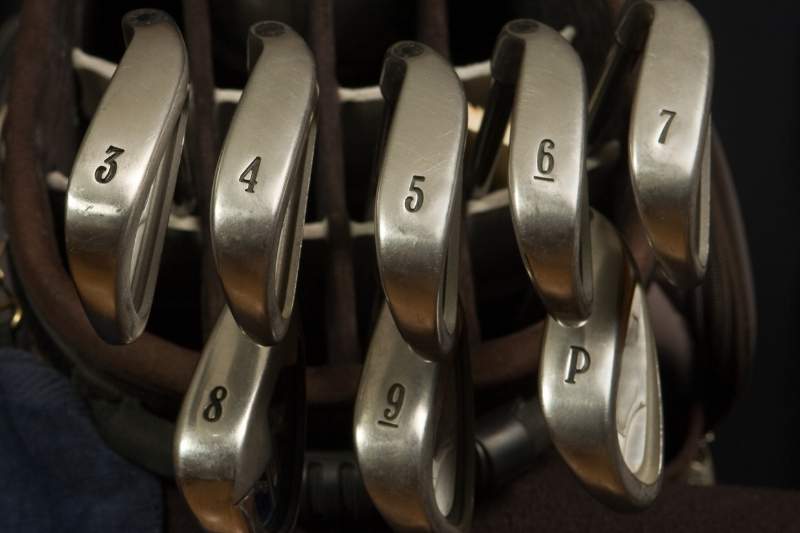
How Do I Know What Golf Clubs To Use?
So since everyone’s distances are different, you will need to figure out the distances for each of your clubs. There are a few methods for figuring this out for yourself.
Driving Range
Most golfers start figuring out their yardages at the practice range. This can be a good place to begin to get comfortable with the difference in yardages between your clubs.
If you’re a beginner, just having a general sense of how far each club is going will give you a little more confidence to get out on the course and play a full round. But also, please ignore the numbers in this article for average yardages for each club. Your yardages are going to be different than the general averages and yours are the only ones that matter.
Most ranges have yardage markers at 50 yard increments to give you a rough idea of distance. Start there to see which clubs get you closest to each marker. When I was learning the game, I would write these down on a small index card and keep it in my bag. After a while, it became second nature and I didn’t need the card for reference anymore.
But there are some major drawbacks to using the driving range to figure out your distances.
First, not all ranges have accurate yardage markers. I’ve seen some ranges be off by as much as 20 yards! You can solve this by picking up a good laser rangefinder so you can accurately measure any landmark on the range.
But the other problem at the practice range is the balls themselves. Unless you’re at a high-end country club, those aren’t ProV1s you’re hitting. Range balls can vary widely in compression and distance. Some of them are even limited in distance on purpose to ensure they stay within the confines of the range.
So here are two ways you can be a lot more accurate…
Use An On Course Shot Tracker
Tracking each shot you take on the course as well as which club you used is an excellent way to figure out your average yardage for each club.
By tracking each shot using GPS, you can compile on-course data from your own game much the same as PGA Tour pros get from ShotLink. After a few rounds, you’ll know your average yardages with each club as well as your longest shot with that club in case you want to safely lay up short of a hazard.
There are some phone apps out there that will let you do this manually, but that is a massive pain and probably does more to distract you from your game than it does to help.
I use the Arccos Caddie system. CLICK HERE to check it out. (Use code UNDERPAR for 10% off).
It consists of small sensors that you attach to the butt end of each club and sync with an app on your phone. It uses the GPS of the phone to track every shot.
It also does a great job of compiling the data from each shot, giving you averages, longest, and even eliminating outlier distances so that one shank doesn’t skew your numbers.
You can check out my detailed review of the Arccos Caddie shot tracker HERE.
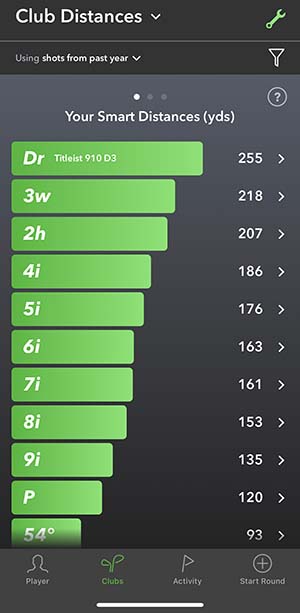
But the one downside to using on-course data is that it can be affected by conditions such as cold, wind, rain, etc. So if you play through the winter, then you might not get yardages that will work once spring arrives.
This next method is a great way to get the most accurate data.
Using A Lanuch Monitor
A launch monitor will allow you to get distance numbers with your own golf ball under controlled conditions.
Getting yardages under controlled conditions is quite helpful because it gives you consistent baseline yardages to work off of. Using a launch monitor, you’ll know that any gains or losses in distance are a result of your swing and not outside conditions.
Then you can go out on the course and make your own adjustments based on weather and course conditions.
Gone are the days when you had to be a golf pro to have access to a quality launch monitor. Now, any golfer can get a decent one to set up at home for about the same cost as the latest driver.
If you are serious about dialing in your yardages and shooting the lowest scores, using a combination of a shot tracker and a launch monitor will give you all the information you need to see how you strike the ball and how that translates to your on-course game.
Average Distance vs. Longest
One mistake many amateurs make is using their longest distance with each club when deciding when to use each club.
If you choose your club based on your longest distance with that club, then you’re guaranteeing that you’ll leave the ball short most of the time. Most amateurs leave the ball short on approaches substantially more than they hit it long.
First, you need to know your average distance with that club. If you want some help figuring that part out then read the section above.
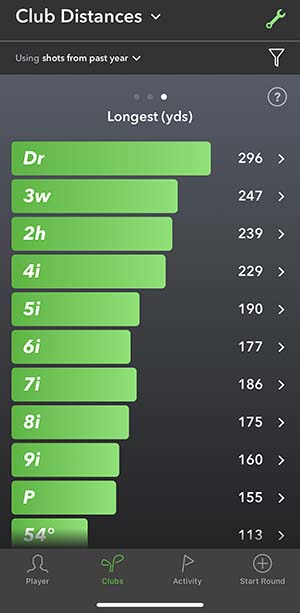
Second, when choosing the yardage for approach shots, it is a very good idea to use the yardage to the back of the green. Your well-struck shots will be right at or above your average and slight mis-hits will be a little short of that. Either way, you’ll end up with a putter in your hands for the next shot.
Improving your approach play is all about managing the mis-hits and planning your strategy so that even your mis-hits end up in a decent spot. Getting more greens in regulation will dramatically improve your score, no matter where on the green they land.
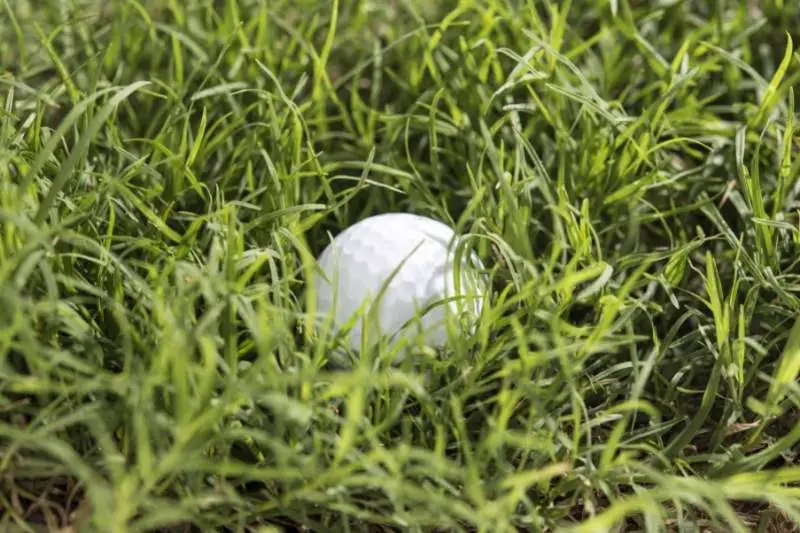
What Golf Club Should I Use In The Rough?
In the rough, you should use the club that gives you the distance closest to your target yardage that you feel comfortable hitting out of the lie you have.
Your first goal when hitting out of the rough should be to make solid contact and advance the ball as close to your target as possible.
Long irons, hybrids, and woods are going to be harder to hit out of the rough because the swing path or attack angle for these clubs is naturally shallower, which means more grass gets between the club and the ball.
You need to know which clubs you can comfortably hit out of lies in the rough. This comes with practice. It can be difficult to practice this on the range, so head to the course during an off-time like late in the afternoon.
While out on the course (and while no one is waiting behind you), drop a few balls in the rough and try hitting them with different irons. Then do this again in different rough conditions. After a while, you’ll get a feel for what kind of lies you can get out with a longer iron and which ones will require you to use less club in order to advance the ball as far as possible.
Should I Club Up In The Rough?
In general, you should not club up in the rough. Using a less lofted club increases your chances of a mis-hit in the rough. If you are in deep rough then it’s better to use a more lofted club to be certain of advancing the ball closer to the green.
Even in light rough, clubbing up can be a bad idea because you are more likely to get a “flier lie.” A flier lie is when there is only a small amount of grass behind the ball so that it doesn’t slow down your swing but does get between the club and the ball to reduce backspin.
The reduced backspin can make the ball fly 1 or 2 clubs longer than expected. If anything, you may want to try using 1 less club when in the light rough (unless there is more trouble in front of the green than over it, in which case you should err on the long side).
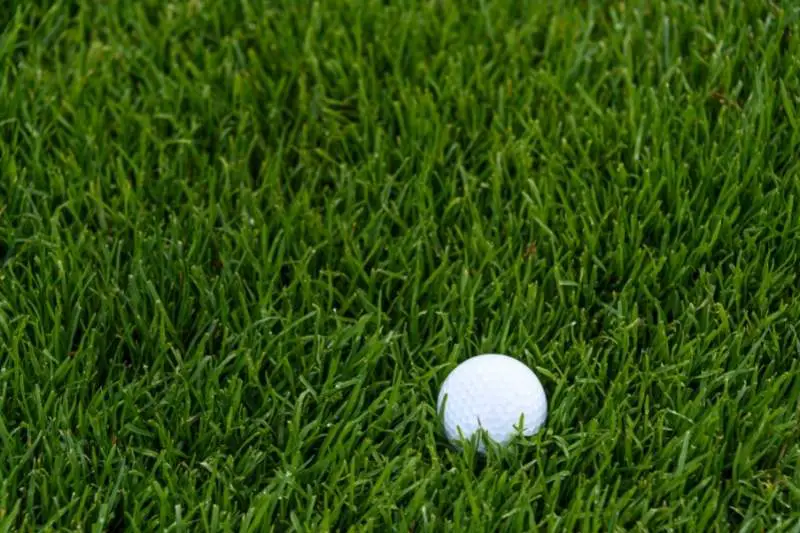
What Club Should A Beginner Use In Golf?
A beginner should use a low to mid-iron like an 8 or 7 iron when learning to play golf. While you’ll eventually need to become comfortable with every club in the bag, these irons are short enough to be easier to use and aren’t so high lofted that they would be difficult to strike the ball well.
Once you can make solid contact with an 8 or 7 iron, then try expanding the range to mid irons like the 5 or 6 iron as well as wedges like the pitching wedge.
